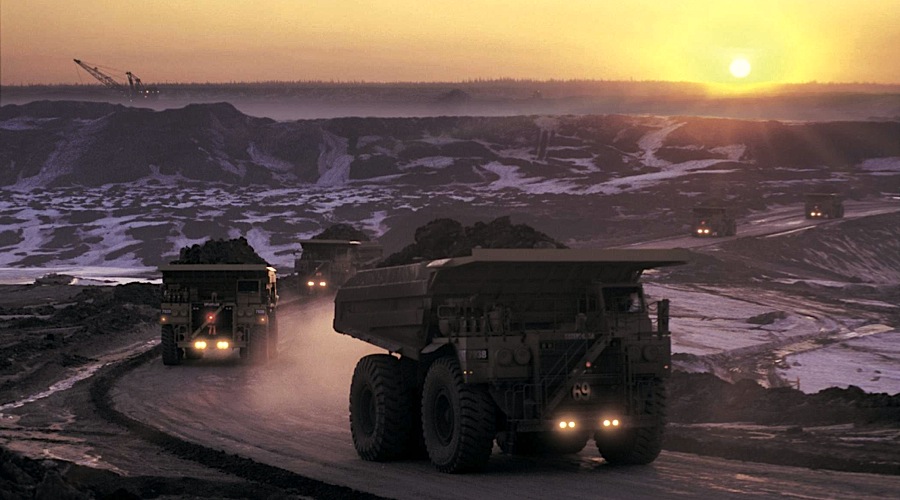Breakthrough in oil sands tech could transform the industry

Oil sands extraction evokes dark scenes of toxic trailing ponds and apocalyptic wastelands—but that’s Alberta. Welcome to Utah, where extraction leaves no trace as MCW Energy positions itself on the right side of history, breaching a major gap between industry and environment and taking yet another step toward reaching new markets with its clean tech.
It’s a popular rule of thumb that whenever something looks too good to be true, it is. Yet, like all rules, there are exceptions, and one of these exceptions is the oil extraction technology developed by Canadian company MCW Energy (OTC:MCWEF).
The world still seems to be awash in oil, even though some are questioning the reality of the glut, and there’s growing pressure on the oil industry to put the brakes on in order to save the environment. But the glut has only made it easier for MCW to use its technology, and when it comes to environmental pressure, MCW is on the right side of history.
Oil extraction is a notoriously dirty industry and the pinnacle of “dirtiness” is arguably oil sands extraction. The oil sands of Alberta, pictures of which cannot but make one think of the wastelands of Mordor, deserve their bad name. But here’s something popular opinion has missed: not all oil sands are created the same.
While the Alberta oil sand deposits are relatively deep underground and require the use of water and steam-based extraction technology, there are oil sands in the U.S. state of Utah, which are on or very close to the surface, allowing the oil to be extracted in an alternative way.
The alternative way in question was developed by MCW Energy after five years of research and is based on a water-free, solvent-based approach that not only can recover up to 99% of the hydrocarbon content of the oil sands, but then recycles the solvents it uses, leaving practically no waste. This process is free of the harmful wastewater reservoirs visible in Alberta and across the U.S. shale patch.
MCW Energy’s extraction method not only fully utilizes the hydrocarbon contents of oil sands and then returns the clean sand into the ground; it can also be used fore remedial purposes, fixing the damage done by conventional oil extraction.
In fact, in an interview for Oilprice last year, CEO Dr. R Gerald Bailey said the technology could have been used in the cleanup after the Deepwater Horizon disaster – the worst in the history of oil in the Gulf of Mexico.
On top of all this, the environmentally friendly extraction method is cheap. Since the solvents used in the extraction process are also hydrocarbons–including propane, condensate, and diesel fuel–the cost of the process depends on the prices of crude and oil products. An independent report from Chapman Engineering Company estimated the cost per barrel of oil produced at between $35, at WTI prices of $80, and $24, at WTI prices of $35.
MCW was smart to keep quiet about its research until it confirmed its economic viability. After this, it wasted no time applying the technology.
Its processing facility in Utah’s Asphalt Ridge started with an initial capacity of 250 bpd, which may not sound like a huge amount, but the capacity can easily be scaled up to 5,000 bpd. The plant is strategically located in the heart of Utah’s oil and gas industry, the Uinta Basin, believed to hold more than 30 billion barrels of oil, distributed across eight deposits, including Asphalt Ridge.
Like everyone in the oil industry, even the lowest-cost producers, MCW had to make some adjustments when oil prices tanked below $30 a barrel early this year. But this was not the only reason the company reduced its output at Asphalt Ridge: it was preparing to expand the processing capacity to 500 bpd and winterizing the plant, to expand production throughout the year.
MCW Energy’s extraction method not only fully utilizes the hydrocarbon contents of oil sands and then returns the clean sand into the ground; it can also be used fore remedial purposes, fixing the damage done by conventional oil extraction.
The right team has been instrumental for the success of the innovative technology. It was developed by the company’s co-founder and Chairman Aleksandr Blyumkin and the company’s current Chief Technology Officer Vladimir Podlipskiy, an expert on benign solvents. Blyumkin, an energy industry vet with a string of successful projects around the world under his belt, also provided the core funding for advancing the technology.
Chief executive Dr. R Gerald Bailey was formerly the regional head of Exxon for the Gulf region. With over five decades of experience in oil and gas, he was the right man to take the helm of the company. In his 2015 interview with Oilprice, Bailey said that what attracted him to MCW Energy was the fact its technology was completely new and basically nobody was aware of it and, of course, its primary advantage over existing technologies: that it’s environmentally friendly.
This environmental friendliness factor could be exactly what ensures MCW’s long-term success. Its unique technology does not necessarily have to be used for oil extraction from oil sands. The method can just as successfully be used for cleanup purposes and that is a major part of the company’s expansion efforts to date.
In a recent update, MCW reported that it is in talks with several parties that may see its technology exported in various markets. Back in 2015, CEO Bailey identified two principal ways of doing this: through licensing of third parties or through joint ventures.
Now the company has awarded its first license, to Canadian TS Energy, which will have the rights to use the technology in Canada and Trinidad and Tobago. The coming weeks will see further partnerships, solidifying MCW’s status as a pioneer in eco-friendly crude oil extraction.
On the pragmatic side, the versatility of MCW Energy’s proprietary extraction technology will ensure the company has a comfortable range of revenue streams that will make it much less dependent for its bottom line on the fundamentals and speculative activity of the oil market.
Perhaps the main challenge the company now needs to overcome is the public distrust of oil sands exploitation. A clean environmental record is the ultimate evidence that the closed-looped oil sands processing model is working.
By James Burgess of Oilprice.com
Legal Disclaimer/Disclosure: MCW Energy is an Oilprice.com client. This document is not and should not be construed as an offer to sell or the solicitation of an offer to purchase or subscribe for any investment. No information in this Report should be construed as individualized investment advice. A licensed financial advisor should be consulted prior to making any investment decision. We make no guarantee, representation or warranty and accept no responsibility or liability as to its accuracy or completeness. Expressions of opinion are those of Oilprice.com only and are subject to change without notice. Oilprice.com assumes no warranty, liability or guarantee for the current relevance, correctness or completeness of any information provided within this Report and will not be held liable for the consequence of reliance upon any opinion or statement contained herein or any omission. Furthermore, we assume no liability for any direct or indirect loss or damage or, in particular, for lost profit, which you may incur as a result of the use and existence of the information, provided within this Report.
{{ commodity.name }}
{{ post.title }}
{{ post.date }}


Comments